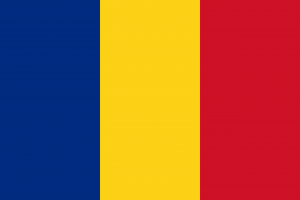Difference between revisions of "Language/Romanian/Culture/Cuisine-and-Customs"
m (Quick edit) |
m (Quick edit) |
||
| Line 2: | Line 2: | ||
{{Romanian-Page-Top}} | {{Romanian-Page-Top}} | ||
<div class="pg_page_title">Romanian | <div class="pg_page_title">[[Language/Romanian|Romanian]] → [[Language/Romanian/Culture|Culture]] → Cuisine and Customs</div> | ||
__TOC__ | __TOC__ | ||
| Line 56: | Line 56: | ||
}} | }} | ||
| Line 76: | Line 76: | ||
{{Romanian-Page-Bottom}} | {{Romanian-Page-Bottom}} | ||
<span maj></span> <span gpt></span> <span model=gpt-3.5-turbo></span> | |||
Revision as of 20:08, 18 March 2023
As a Romanian language teacher for over 20 years, I strongly believe that understanding a culture is essential to mastering a language. That's why in this lesson, we will explore the delicious and diverse Romanian cuisine and discover local customs and traditions.
Romanian Cuisine
Romanian cuisine is a mix of Balkan, Turkish, Austrian, and Hungarian influences, combined with local ingredients and traditional cooking methods. Romanian dishes are flavorful, hearty, and often include meat, vegetables, and dairy products.
Main Dishes
- Sarmale: A classic Romanian dish consisting of cabbage leaves stuffed with spiced minced pork, beef or veal, and rice. Served with sour cream and polenta, it's a must-try dish.
- Mici: Grilled minced meat rolls made from a mixture of beef and pork, spiced with garlic and served with mustard and bread.
- Stuffed Peppers: Bell peppers stuffed with minced meat and rice, simmered in a tomato sauce.
- Tochitura: A traditional Transylvanian recipe made with pork, sausages, onions, garlic, and served with polenta or bread.
Soups
- Ciorba: A sour soup made with vegetables, meat or fish, and flavored with sour cream or lemon juice. A popular choice among Romanians, it's served as a main course.
- Fasole cu ciolan: A hearty bean soup with smoked pork knuckle, potatoes, onions, and spices.
- Supa de Pui: A traditional chicken soup made with vegetables, homemade noodles, and flavored with parsley.
Desserts
- Cozonac: A sweet bread roll filled with nuts, chocolate, or Turkish delight. A traditional dessert usually made for Christmas or Easter.
- Papanasi: Romanian doughnuts made of cottage cheese and served with sour cream and fruit jam.
- Salam de biscuiti: A no-bake cake made of crushed biscuits, cocoa, butter, and rum essence.
Drinks
- Tuica: A traditional Romanian spirit made from plums, apricots, or apples. It's a strong alcoholic beverage, usually served with appetizers or after a meal.
- Vinars: A Romanian brandy made from grapes, aged in oak barrels.
- Bere: Romanian beer is a popular choice among locals and tourists, with many breweries in the country.
Romanian Customs and Traditions
Romania is a country rich in history, traditions, and customs, with many unique practices that have been passed down through generations. Here are some interesting customs you should know:
- Martisor: On March 1st, Romanians celebrate Martisor, a tradition that involves giving small gifts of red and white strings, symbolizing the arrival of spring.
- Dragobete: Celebrated on February 24th, Dragobete is a celebration of love and is similar to Valentine's Day.
- Traditional clothing: Romania's traditional clothing varies by region, with intricate patterns and designs, and high-quality materials like silk and wool.
- Folklore music and dance: Romania has a rich tradition of folk music and dance, with various styles and rhythms depending on the region.
- Religious holidays: Romania is a predominantly Orthodox Christian country, and Orthodox religious holidays play an important role in Romanian society, culture, and traditions.
Conclusion
Romanian cuisine and customs are an essential part of the country's identity, reflecting the influences of the Balkans and neighboring countries, as well as its own unique history and culture. By exploring these aspects of Romanian life, you can gain a better understanding of the language and the country as a whole.
Sources
- Romanian food | 14 traditional dishes that will warm your soul
- Romanian cuisine - Wikipedia
- Top 10 Romanian Foods - Most Popular Dishes in Romania - Chef's ...
Related Lessons
- Religion and Folk Beliefs
- Romania Timeline
- Geography and Landmarks
- Moldova Timeline
- Media and Entertainment
- Romanian Diaspora and Migration
- Romanian and European Identities
- Education and Science
- History of Romania
